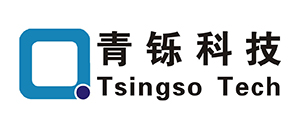A benchtop machine for demonstrating the failure of materials when subjected to an alternating stress, showing both low and high cycle fatigue.
Key Features
• Compact benchtop unit, ideal for student use and classroom demonstrations
• Demonstrates clearly both high and low cycle fatigue
• Adjustable ‘dead weight’ and load cell system, to apply and measure a consistent and accurate load on the test specimens
• Electronic display of cycle rate, cycle count and load
• Clear guard with interlock allows the experiment to be viewed in safety
• Automatic switch stops the experiment when the specimen breaks – lets the equipment run unattended
• Includes tools and three sets of specimens of diff erent metals
• Supplied with TecQuipment’s Versatile Data Acquisition System (VDAS® Onboard), featuring data acquisition via USB, perfect to monitor the experiment while unattended
Description
This machine demonstrates the fatigue failure of materials when subject to alternating stresses. Based on Wohler’s design, it uses a motor to rotate a circular cantilever specimen with a load at its free end. It is in two parts: a robust main unit, and a separate control and instrumentation unit.
A variable speed drive controls the motor to allow safe and gradual increase of the cycle rate. The motor turns a compliant coupling and a precision shaft held in sturdy bearings. A collet type chuck on the end of the shaft grips the specimen with reliable and accurate concentricity. This reduces set up time and unwanted vibration.
The specimens have a special design that creates a point of maximum stress at their midpoint rather than at their end. This gives a defi nite point of failure and avoids unwanted stress concentrations.
A gimbal mounted self-aligning bearing holds the ‘free end’ of the specimen. The gimbal assembly links to a short load arm. This applies a purely vertical load even when the specimen defl ects under load. A load cell links the short load arm to a longer load arm. The longer load arm has an integral moveable dead weight that sets the load.
The load cell measures the load and an electronic sensor measures shaft rotation. The separate control and instrumentation unit shows the load, speed (cycle rate) and the number of cycles.
A switch cuts power to the drive motor when the specimen fails, stopping the test. This freezes the cycle display at failure to record the result, even without the operator being present. Unlike some designs, the mechanism shuts off the motor only when the specimen actually breaks (not when the specimen is near to failure).
A removable clear guard covers the rotating parts. It has an interlock switch to stop the motor if the guard is removed.
The machine includes aluminium, steel and brass specimens and tools to fi t and remove them. TecQuipment can also supply extra specimens to work with this machine. The base of the main unit includes a handy storage area to store the tools and specimens when not in use.
The control and instrumentation unit is supplied with TecQuipment’s Versatile Data Acquisition System (VDAS® Onboard). VDAS® Onboard connectes via a USB cable (supplied) to a suitable PC (not supplied). This gives accurate real-time data capture, monitoring and display, calculation and charting of all important readings. This may allow the use of a networked computer and remote monitoring of tests. This could be especially useful during tests of long duration.
Note: The local computer engineer must be contacted to setup suitable software (not supplied) for remote monitoring.
Learning outcomes
The user guide includes suggested experiments that show:
• Low and high-cycle fatigue
• How to create and use Wohler (S-N) curves for various materials
• Comparison of fatigue properties of various materials
Recommended Ancillaries
• Additional Specimens: RF1010 (steel), RF1020 (aluminium) and RF1030 (brass)

